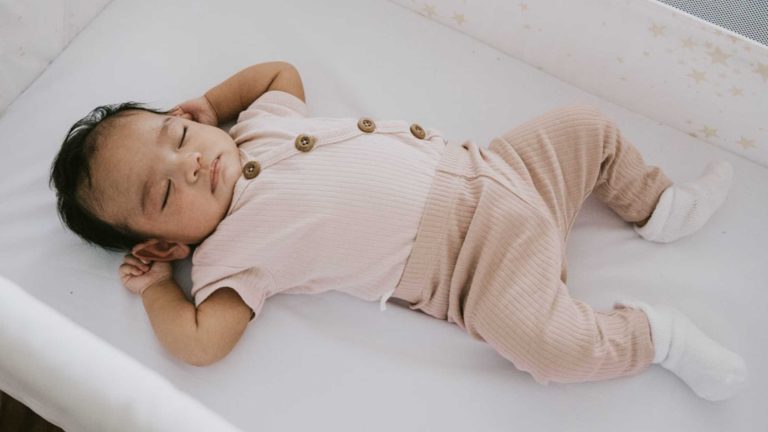
How to Get a Baby to Sleep Safely: Here’s Your Safe Sleep 7 Guide
- Created:
24. 1. 2023 - Updated:
15. 2. 2024
As a parent, you know how fragile a baby is. Baby needs to be handled with care and monitored closely at all times.
Hence:
As a parent, you have to make sure you are doing everything in your power to keep your baby safe during sleep.
So this is a big deal:
Safe sleep. And it’s more important than ever since experts now know that SIDS (sudden infant death syndrome) can be prevented.
To that end:
The Safe Sleep 7 are seven safe sleep practices that will help you protect your baby from SIDS. Here’s your in-depth guide!
To Keep Your Baby Safe While They Sleep Follow the Safe Sleep Seven
Put baby to sleep on back at naptime and at night. Maintain a firm sleeping surface. Ensure that the crib is free of soft objects or loose bedding. Breastfeed, if you can. When pregnant and after delivery, avoid smoke exposure. During pregnancy and after delivery, do not use alcohol or illicit drugs.
You and your baby should share a bedroom, but not the same sleeping surface. At least until your baby turns one. It has been shown that room-sharing can reduce the risk of SIDS by up to 50%.
During nap time and at bedtime, offer a pacifier. Pacifiers may reduce the risk of SIDS. If breastfeeding, introduce pacifier after one month or after breastfeeding has been firmly established.
Regarding:
Do not force or insert pacifier into an infant’s mouth if he/she does not want it. Do not attach pacifier to string around infant’s neck or to infant’s clothing. Do not reinsert pacifier once it falls out of an infant’s mouth unless you know it is clean.
Last but not least:
The room should be at a comfortable temperature for you and your baby. If it’s too cold, your little one will be uncomfortable and sleep less; if it’s too hot, they’ll sweat and get dehydrated.
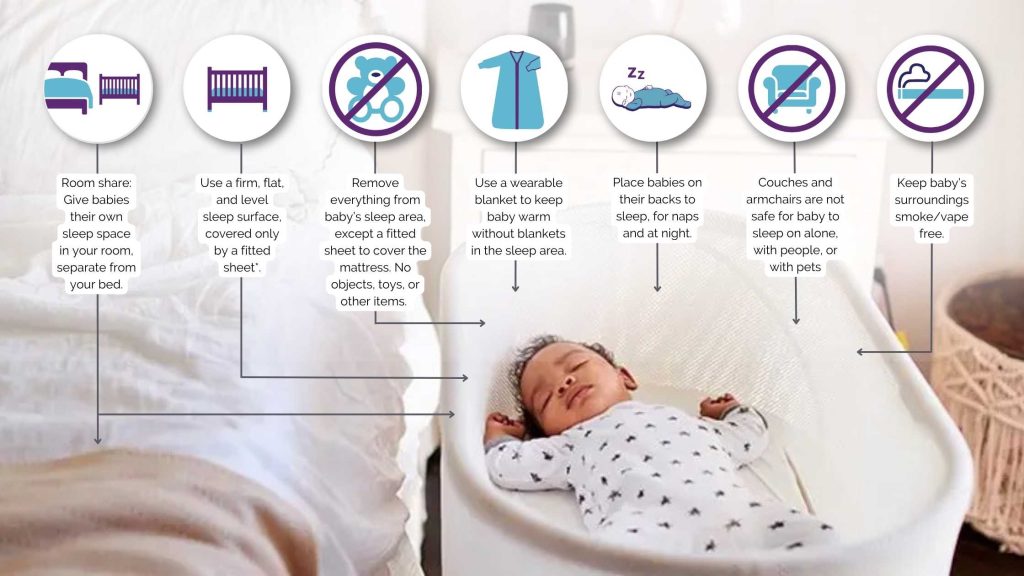
The Safe Sleep Seven Are:
ALONE. Babies should sleep alone on a separate sleeping surface in their parents” room.
Babies should sleep alone in their own crib, bassinet or play yard.
The baby should never sleep in the same bed as a parent, grandparent, or child.
A couch, chair, or other soft surfaces should never be used to put a baby to sleep.
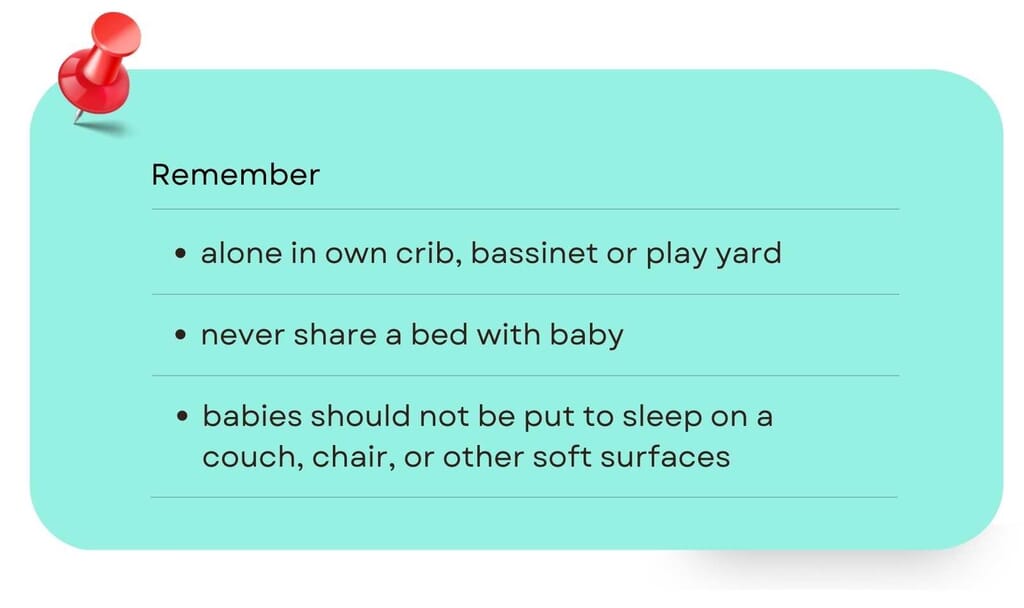
BACK. A baby should sleep on their back at all times, even for naps.
The safest sleep position for your baby is on their back every time they go to sleep. This is especially important when you move your baby from the crib to the bassinet or play yard, in the car seat, and when you put them down for a nap.
Babies should not be placed on their stomachs or sides because these are riskier positions for SIDS and accidental suffocation, rebreathing (breathing in vomit), and aspiration (swallowing something that could block their airway).
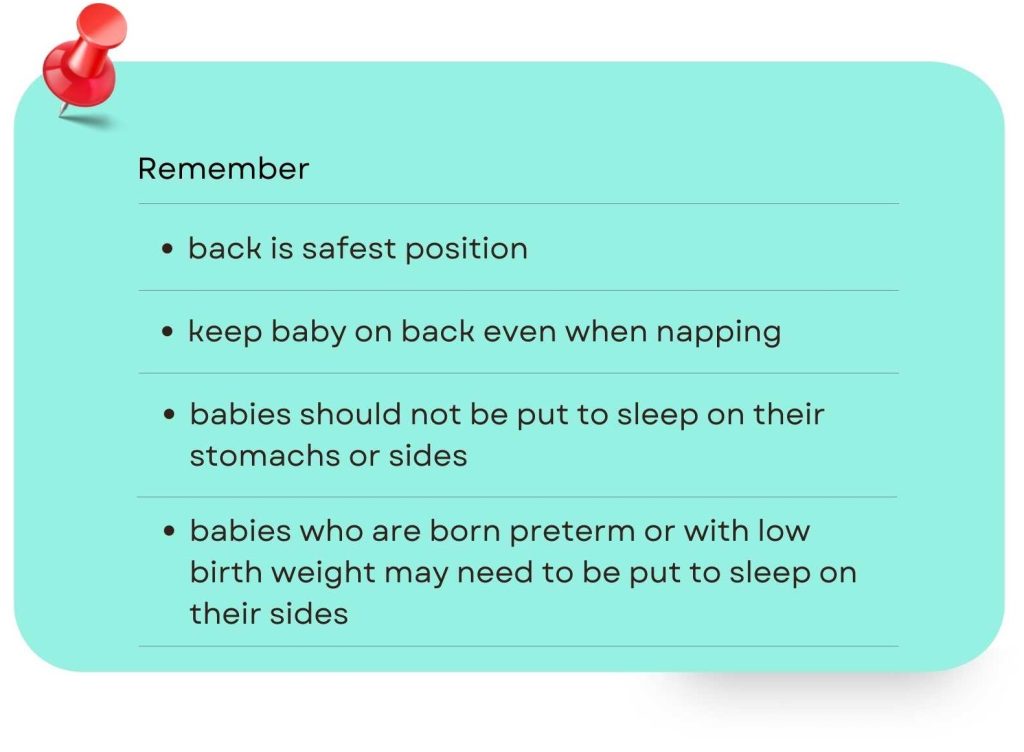
CRIB. Babies should sleep in a safe crib, bassinet or play yard with a tight-fitting bottom sheet.
You should put your baby to sleep in a crib, bassinet or play yard with a tight-fitting bottom sheet. The mattress should be firm, not soft.
There should be no pillows, no blankets or toys in the crib (they’re not safe for babies to sleep with). You can use swaddler if you like, but make sure they don’t block your baby’s face and head.
And the crib shouldn’t have loose bedding (like blankets) that could cover your baby’s face or head while he sleeps.
Although there are lots of things you need to do before putting a newborn into his first bed (selecting the right model, finding the perfect sheets), this is not one of them! In fact, it’s pretty straightforward: Just take off all those extra layers and place your baby in new sleeping quarters.
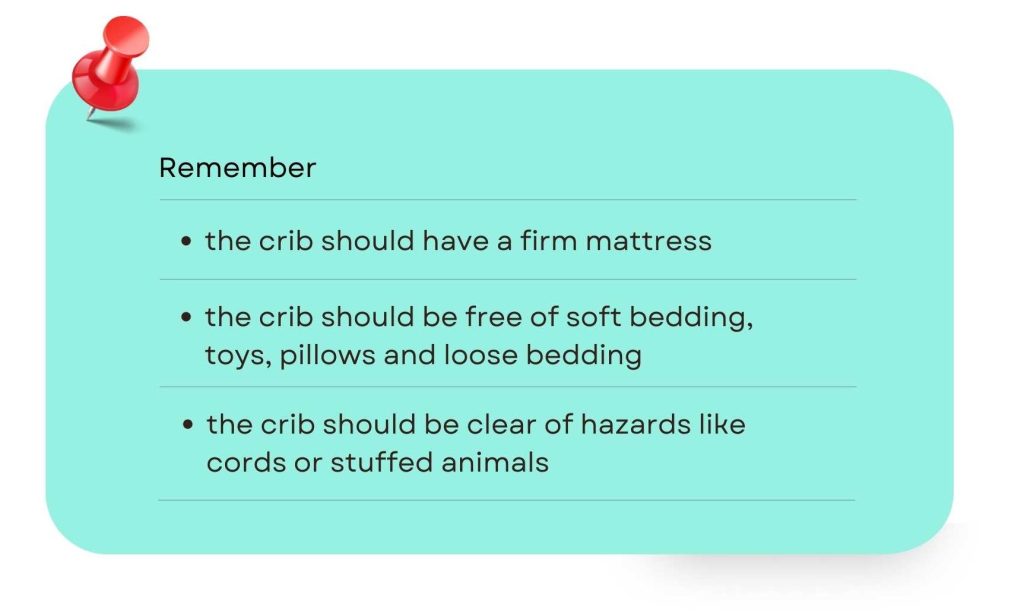
CLEAN. The baby’s sleep area should be clear of soft bedding, toys, pillows and loose bedding.
A safe sleep environment is one that is free of blankets and pillows, or other objects that can cause suffocation by covering the baby’s face or head.
You should not put an infant to sleep on a sofa or armchair where there is a risk the child could fall off and become trapped between cushions or slip down under them into a space where he/she cannot breathe.
The safest place for your baby to sleep is on his back with his arms at his sides in a crib (or similar) without any soft material such as pillows or duvets nearby.
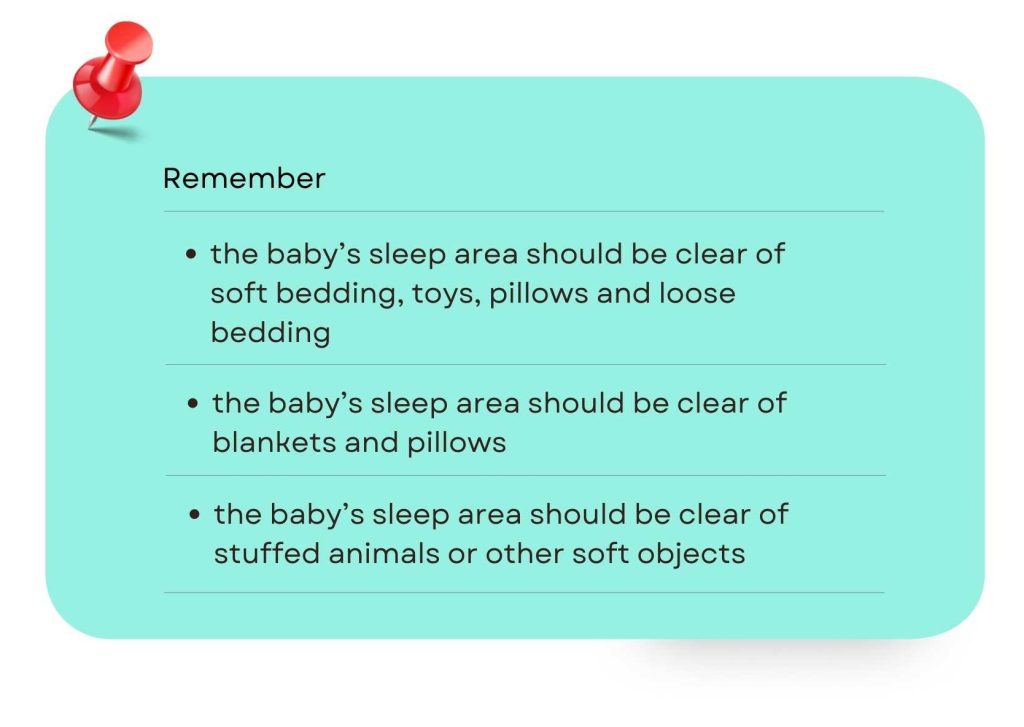
NO SMOKING. The baby’s sleeping area should be smoke-free before and during pregnancy and after birth.
Smoking during pregnancy can cause low birth weight, premature delivery and sudden infant death syndrome (SIDS).
After your baby is born, smoking can cause respiratory illness and ear infections.
In fact, even if you don’t smoke around your baby directly, secondhand smoke may also harm the baby.
In addition to being bad for his health, secondhand smoke affects you as well: it increases the risk of heart disease and lung cancer in non-smokers who breathe it in regularly—which includes babies who breathe it just by sitting next to a parent who smokes! It’s not worth the risk: if you’re planning on having more children one day after this one has grown up safely into adulthood. Stop smoking now!
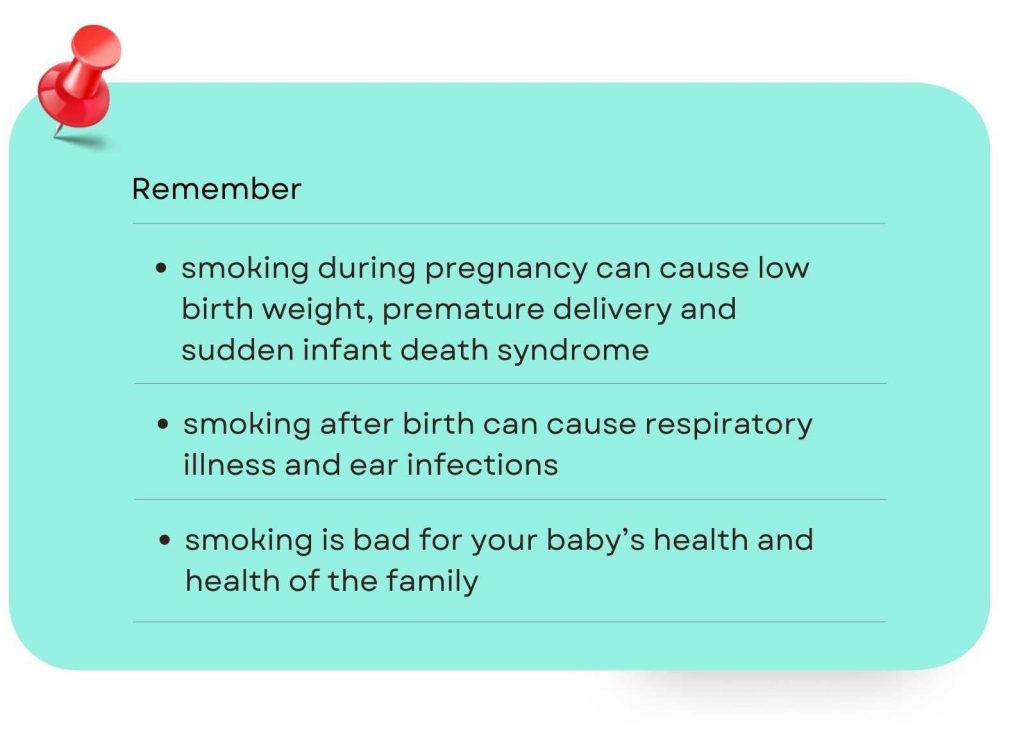
NO HAZARDS IN THE SLEEP AREA that could harm the baby.
No cords, wires or ribbons in the crib. Keep all cords out of the crib and away from baby. This includes window blinds, curtains, and window shades.
Avoid using stuffed animals or toys with small parts that could be swallowed by your child (like a baby doll).
Keep the crib free of pillows and blankets so your baby can’t suffocate on them if he/she was to roll over into them during sleep time.
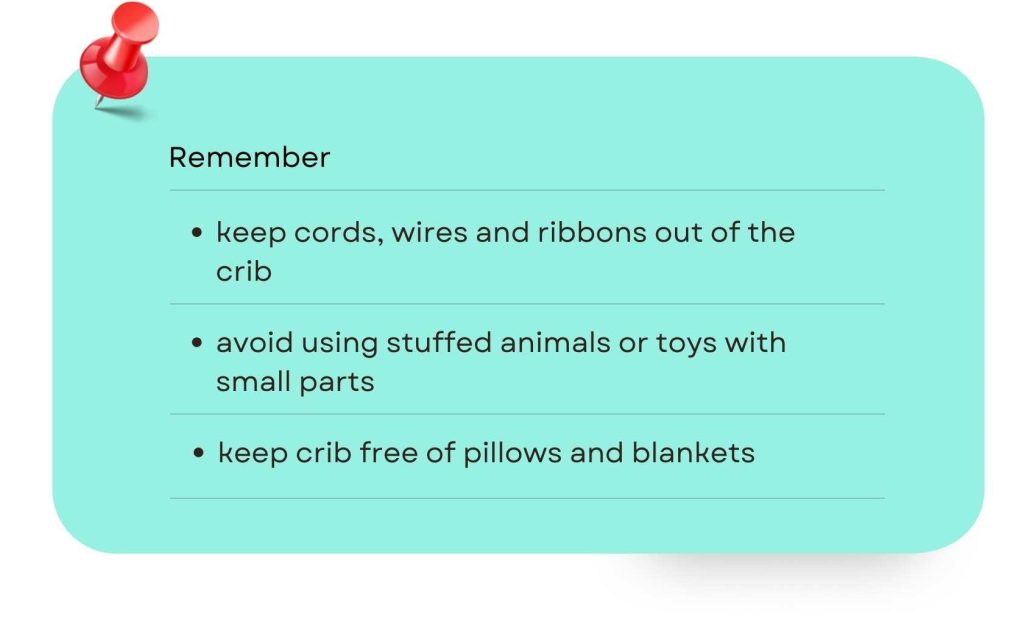
THE BABY IS CLOSE BUT OUT OF REACH of pets and other children when sharing the parents’ room.
Keep your baby close but out of reach of pets and other children.
Cats have very delicate whiskers that can easily break if they get too close to a baby’s face. If your cat likes to sleep near your baby in the crib, you should consider moving them out of the room entirely or at least keep them away from the crib.
Dogs are more likely to be protective around newborns and may try to lick their faces on accident or when they are sleeping. If you have a dog who sleeps with a baby’s head on top of paws or tail sticking over into your child’s sleep area. Then this could cause suffocation. Additionally, there are many reasons dogs should not be allowed near an infant; one reason being it increases the risk for SIDS.
It is important that everyone sleep safely by taking precautions such as checking smoke alarms and making sure there are no hazards nearby before settling down for bedtime.
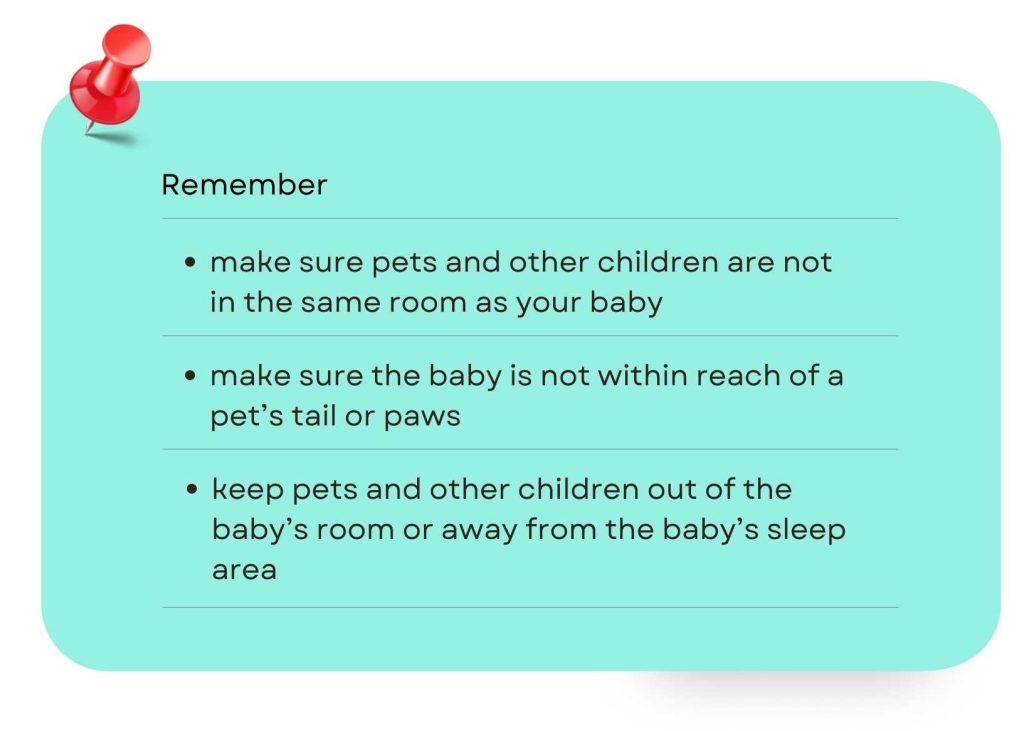
Final Tip: Annie Baby Monitor – A Guardian for Safe Sleep
Keep an eye on your sleeping baby constantly, and make sure they’re safe at all times. Check out Annie Baby Monitor.
This awesome baby monitor app has everything you need to keep an eye on your little one’s safety. You get live video and audio monitoring plus instant alerts if anything – it detects motion, sound, and crying.
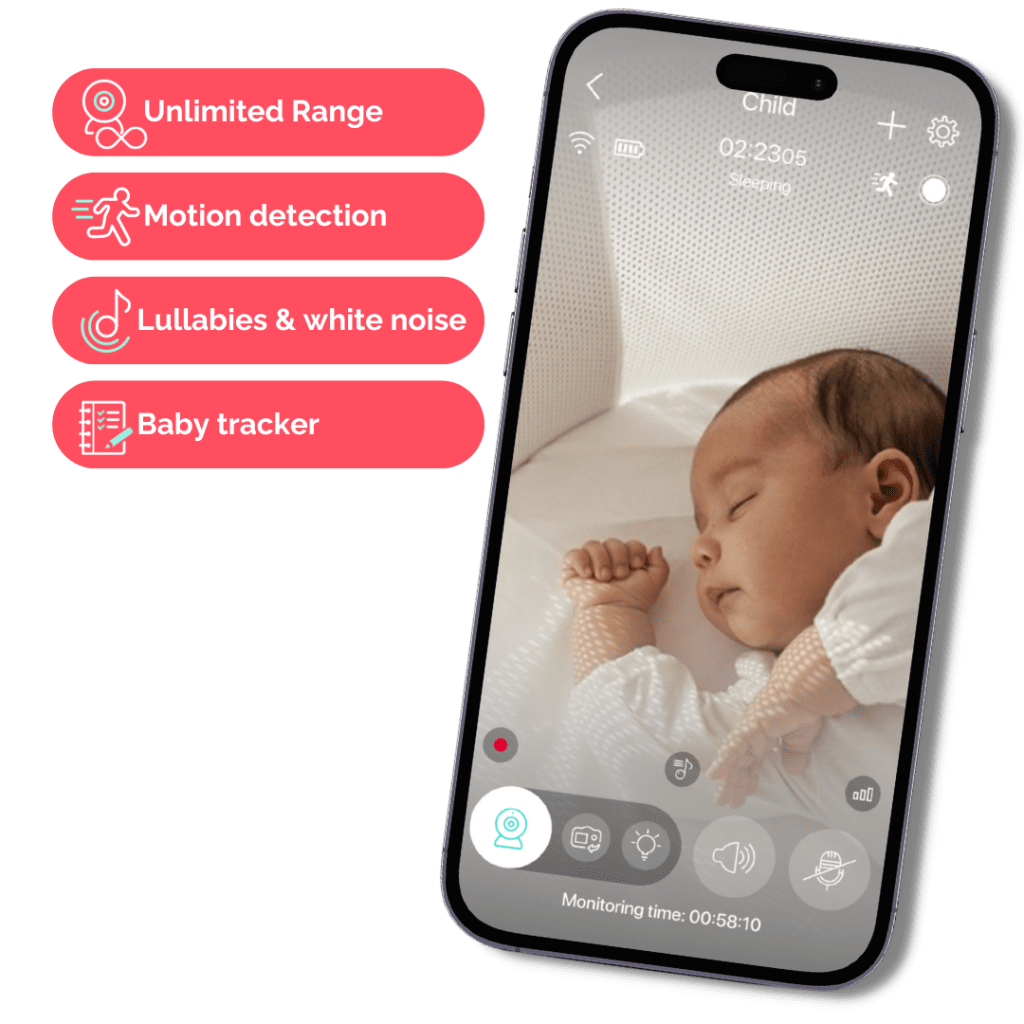
With Annie by your side, you can finally catch a break and relax, knowing that your little one is being looked after 24/7. So why wait? Get Annie Baby Monitor today and sleep easy tonight!
Conclusion
To keep your baby safe while they sleep follow the Safe Sleep Seven
- ALONE
- BACK
- CRIB
- CLEAN
- NO SMOKING
- NO HAZARDS IN THE SLEEP AREA
- THE BABY IS CLOSE BUT OUT OF REACH OF PETS AND OTHER CHILDREN
That’s all there is to it.
You can follow these tips every time your baby sleeps—naps and nighttime—and make sure everyone who cares for your baby knows how to put your baby down to sleep safely.
Remember:
If you have any questions or concerns about safe sleep or SIDS prevention, talk with your pediatrician or other healthcare providers.






